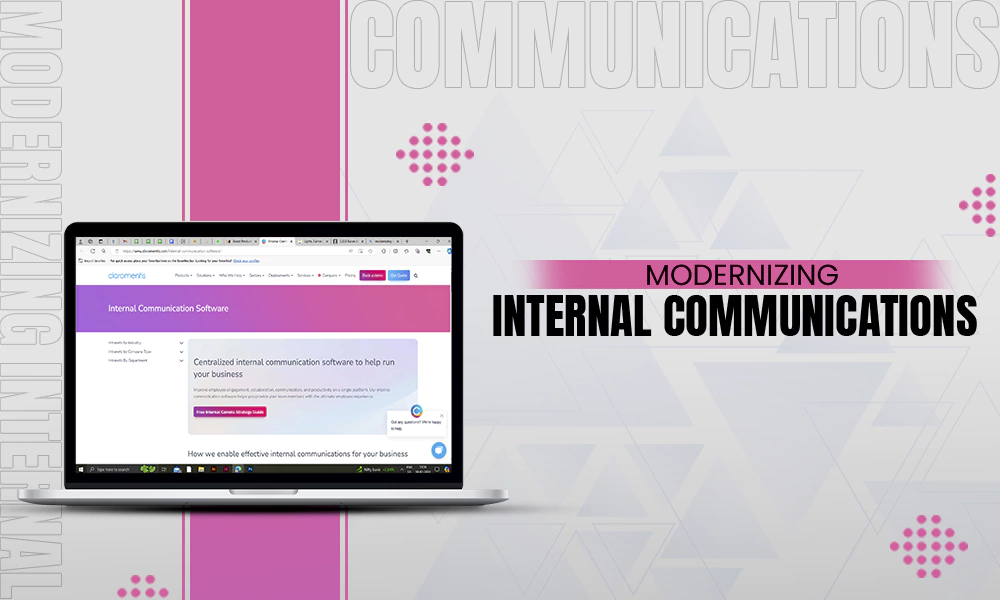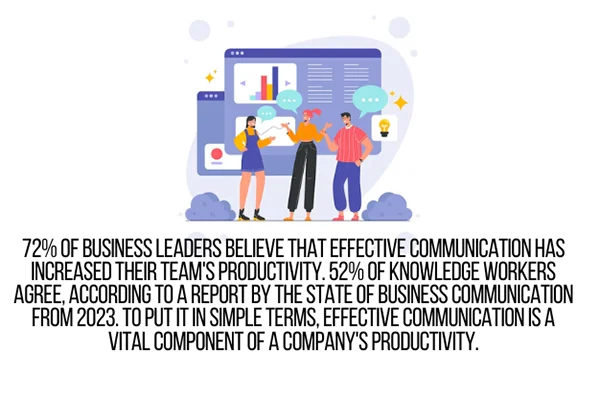Beyond Email: Modernizing Internal Communication for Today’s Business Environment

The world of business has changed over the years but emails are still one of the main ways that many companies use for their internal communication processes.
In such a modern online space where speed matters, businesses need to adopt good internal communication to be successful.
While emails have been with us for decades, they can be pretty limited.
So, if you want to create a cohesive, efficient, and engaging workflow environment for your business.
But, how do you go about improving your company’s internal communication system?
In this blog post, we will see the challenges emails pose in modern workflows and how new-age communication tools like chat and FaceTime can solve these issues.
Challenges with Email Communication
Email has been the main source of internal communication for many companies in the past couple of decades.
While emails may have solved the communication gap in the late 90s and early 2000s but, that’s not the case anymore.
Well, we’re in 2024 and now new and faster ways of communication have come up that not only make it easy for people to keep track of their conversations but also communicate with their teams in real time.
Aside from this, emails come with their own set of headaches, like email overload (too many emails in the inbox), having to wait for replies, and the fact that it’s confusing to track your conversations.
This limited interactivity makes it a very slow communication channel that can affect your organizational efficiency too.
The Rise of Modern Communication Tools
So, with all the limitations that emails have, many companies across the world are adapting new communication tools like chats, voice/video conferences, etc. into their internal communication processes.
These tools include instant messaging apps, collaborative workspace platforms from companies like claromentis.com, project management software, video conferencing tools, and enterprise social networks, among others.
By taking advantage of these tools, organizations can facilitate real-time communication, streamline collaboration, and promote a culture of transparency and openness.
DID YOU KNOW?
269 billion business emails are sent each day around the world. And in the workforce, employees are only able to open around 24% of these emails daily.
Facilitating Real-Time Collaboration
You know, these modern tools are pretty great at promoting a collaborative spirit amongst employees.
You can connect with your teams and colleagues no matter the time or location.
Instant messaging apps like Slack and Microsoft Teams allow teams to communicate seamlessly, share files, and cooperate on projects in real-time.
Similarly, collaborative workspace platforms, such as Google Workspace and Microsoft 365, provide integrated tools for document collaboration, project management, and team collaboration.
This allows the teams to work together more efficiently, no matter where they are located at the time.
Enhancing Engagement and Interactivity
We all know that emails are like a one-sided form of communication.
This means that, just like a physical letter, you have to wait for the other party to see and respond to your emails.
Modern communication channels solve this very easily.
These tools can promote engagement and interactivity among your employees.
Things like group chats, discussion forums, polls, and social networking elements need active participation from your employees and can create a sense of community within the company.
Aside from this, video conferencing tools allow you to do face-to-face communication, which creates more meaningful interactions and enhances employee engagement.
Improving Accessibility and Mobile Connectivity
Modern communication tools offer more than just real-time communication abilities.
They also promote more accessibility and connectivity than emails.
You can easily have live conversations with them and you can even connect from anywhere in the world.
Besides, with mobile apps and responsive designs, your employees can stay connected with the workplace even on the go.
This flexibility empowers remote and distributed teams to work effectively, ensuring seamless communication and collaboration across the organization.
Promoting a Culture of Innovation and Agility
By updating their internal communication processes to fit modern standards, companies can promote a culture of innovation and agility that can give them a competitive advantage over their competitors.
By embracing new communication tools and platforms, organizations can adapt quickly to changing market dynamics, foster creativity and collaboration, and respond more effectively to customer needs and market trends.

Conclusion
Modernizing internal communication beyond email is essential for organizations seeking to thrive in today’s dynamic and fast-paced business environment.
By adopting new communication technologies in their internal communications processes, companies can increase their efficiency and productivity.
And, with the ability to interact in real-time, they can also create a more engaging process as well as promote a space for interconnectivity and inclusivity.
Plus, with responsive designs and accessibility from any device, your employees can work literally from anywhere.
This can help you create a more connected, collaborative, and productive workforce.









